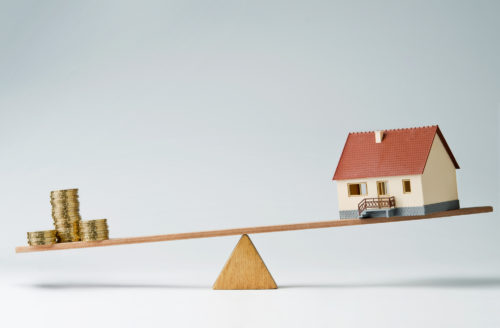If you’re thinking about buying a home in the near future, you may be overwhelmed about the various costs and procedures involved. Many people see homeownership as a more affordable alternative to renting, as well as a way to invest money in a permanent asset. While homeownership has many benefits, there are also a variety of hidden costs associated with buying and owning a home that can add up fast.
It can be hard to know how much you need to have saved and what you should plan to spend when purchasing a house. What’s worse, many people are surprised by unexpected costs and fees while they’re in the process of purchasing a home. When you’re dealing with numbers that have multiple zeroes on the end, it can be easy to get overwhelmed and lose perspective. Even worse, failing to factor in these additional costs can wreak havoc on your budget going forward.
As long as you take these additional costs into consideration, however, you will have all of the information necessary to calculate savings goals and future expenses. Read on to learn more about how much you should have saved up in order to purchase a home!
Table of Contents
What Is the Cost of a House in the U.S.?
The median cost of a new home in the United States was approximately $310,000 in June of 2019. However, this price represents only the value of the property, not the full upfront cash needed to buy a home.
There are many hidden expenses that new homeowners may be surprised by, both at the time of purchase and over the life of a home. When considering purchasing a home, it’s important to have enough money saved up to cover not only the sticker price but also a whole host of other associated costs.
How Much to Save for a House
When purchasing a house, there are usually a variety of one-time upfront costs to consider, as well as long-term recurring expenses. You need cash on hand in order to make the upfront payments and should factor any recurring costs into your budget going forward. First-time homeowners are often surprised by all of the associated fees and costs that come with purchasing and owning a home, so it’s important to be prepared.
Knowing exactly how much you’ll need to spend can help you to make the right financial decision for your situation. Upfront costs can include the down payment, closing costs, broker fees, and mortgage insurance. By calculating the additional money you’ll need to purchase a house, you can save accordingly and avoid any unpleasant surprises.
Down Payment
Most potential homeowners are familiar with the down payment, which is usually the biggest upfront cost associated with purchasing a new home. Traditionally, a down payment often represents 20% of the total cost of the house, but it can be significantly less depending on the specific situation. There are often many different kinds of loan and payment options available, so 20% is less of a fixed ratio than just a good goal to have in mind.
Closing Costs
There are a variety of closing costs that may apply to the sale when you purchase a new home. These can include:
- Appraisal fee: A professional estimate of how much the home is worth.
- Survey fee: The cost to determine boundary lines on the property.
- Wire transfer fee: The cost associated with wire transferring the money necessary to purchase the house.
- Underwriting and origination fees: The cost for processing your loan application, which can often be negotiated.
- Document preparation fee: The cost of preparing loan documents, which can sometimes be negotiated or even eliminated.
- Discount points: The cost for an optional additional payment that may lower your interest rate.
- Credit report fee: The cost associated with running your credit score.
- Title insurance: The cost for insurance that will protect you in case the seller doesn’t have full authority over the property in question.
- Recording fee: The cost for the government to enter the property into their records.
- Inspection fee: The cost associated with inspecting the house to make sure that there are no structural issues or other hazards.
Broker Fees
Broker fees represent the cost of hiring a real estate agent. These fees can often be around 5-6% of the cost of the house. Typically, half goes to the buyer’s agent and half goes to the seller’s agent.
Mortgage Insurance
If you put less than 20% down on your house, you may need to purchase mortgage insurance. Mortgage insurance protects the investment of the lender in case you default on your loan. It can increase the cost of your mortgage payments in order to offset the potential risk of a loan with a small initial down payment.
Additional Costs of Buying a House
While many people save money in the long-run by owning their own homes, it can be expensive for first-time buyers to make the leap from renting. In addition to the fees associated with purchasing a new home, there are a variety of ongoing monthly or annual expenses that you should take into consideration when planning your budget.
This can mean mortgage payments as well as property taxes, home insurance, and more — all of which can add up to a few extra thousand dollars a year. These added costs can be built into your savings goals, but they should also be sustainable in relation to your income and budget.
Mortgage Payments
Mortgage payments are the regular payments that the homebuyer makes to the lender. Mortgage payments typically depend on the price of your home, the terms of your loan, and how soon you plan to pay off your house.
Property Taxes
Property taxes are the responsibility of the homeowner. These can vary from state to state and even town to town. Property taxes are partially based on the value of the home and can increase if you make any improvements or additions to your property.
Home Insurance
Home insurance insures against damage to the home. In particular, home insurance protects against damages related to accidents like fires or floods, and natural disasters like hurricanes, earthquakes, and more. Houses in areas with a high incidence of natural disasters often require more expensive home insurance.
Maintenance and Living Expenses
When you make the jump from renting an apartment to purchasing a house, there are a variety of day-to-day expenses to take into consideration. If you’re moving into a larger space, you may need to invest money in furniture and appliances that you don’t already own.
In addition, utility expenses and maintenance costs are typically more expensive for a house than an apartment. If you live in an area with a Homeowner’s Association, you can also expect to pay HOA fees each month.
The Real Cost of Buying a Home
With all of these costs to consider, there’s a lot that goes into setting a budget and determining savings goals for a potential new house. While the cost of these expenses can sometimes seem overwhelming, it’s much better to be prepared for these additional costs and fees than to have them pop up as an unexpected surprise.
Closing costs, broker fees, insurance, taxes, and utilities should all be factored into your calculations when you’re deciding whether or not to buy a house. In addition, these costs can vary depending on the location, as well as on the size and value of your house. While homeownership can often save you money in the long run, it’s important to be aware of the many additional costs associated with purchasing a new home.
Image Source: https://depositphotos.com/





